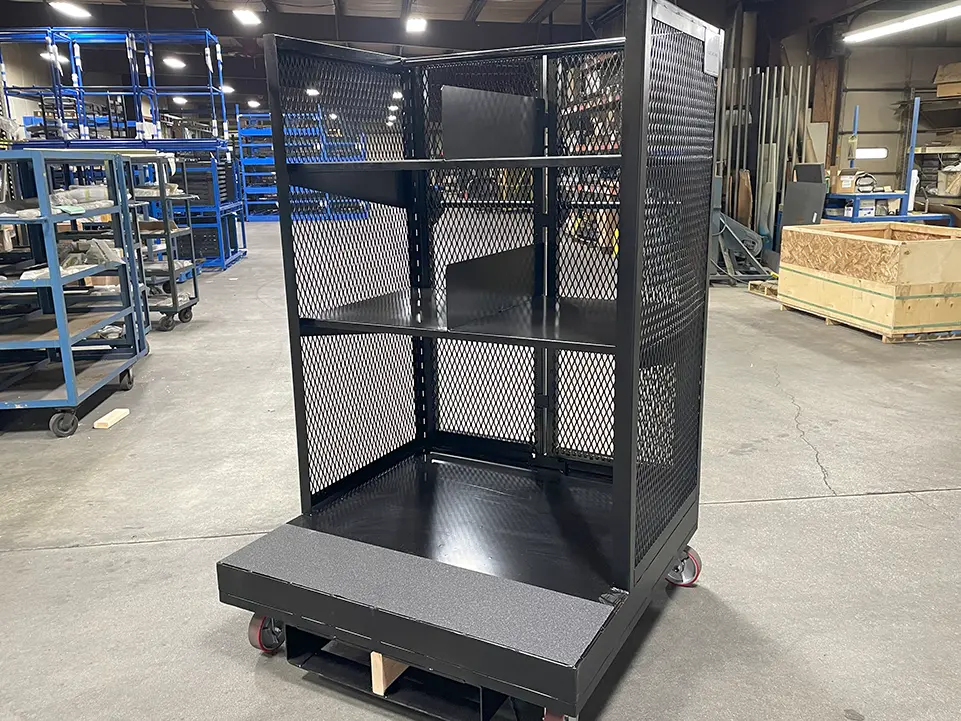Warehouse efficiency isn’t just a competitive advantage; it’s a necessity for survival. As e-commerce continues to surge and customer expectations for rapid delivery reach new heights, traditional order picking methods are struggling to keep pace. Enter order picker carts, the game-changing solution that’s revolutionizing how warehouses approach their most labor-intensive operations.
Have you ever wondered why some warehouses effortlessly handle massive order volumes while others struggle with basic fulfillment? The answer often lies in their picking methodology. Order picking carts represent a fundamental shift from outdated manual processes to streamlined, safety-focused operations that dramatically boost productivity while reducing operational costs.
The Evolution of Warehouse Order Picking: Why Traditional Methods Fall Short
Understanding Traditional Picking Challenges
Traditional warehouse picking methods have long relied on workers manually traversing aisles with basic carts or containers, often requiring multiple trips to complete single orders. This approach creates numerous bottlenecks that compound throughout the workday. Workers frequently backtrack through the same aisles, carrying heavy items without proper support, and struggling to organize multiple orders simultaneously.
The inefficiencies run deeper than simple time wastage. Manual picking processes often result in picking errors, which cascade into customer dissatisfaction, return processing, and additional labor costs. When workers constantly bend, lift, and reach for items at various heights, fatigue sets in quickly, leading to decreased accuracy and increased injury risk.
Safety Concerns in Manual Order Picking
Worker safety represents the most critical flaw in traditional picking methods. The repetitive nature of manual order picking, awkward lifting positions, and extended periods of walking on concrete floors contribute to high workplace injury rates. Back strains, repetitive motion injuries, and accidents from dropped items create human and financial costs that forward-thinking companies can no longer ignore.
Warehouse order picking carts address these safety concerns head-on by providing ergonomic solutions that reduce physical strain while improving workplace safety. The transition from reactive injury management to proactive safety implementation represents a paradigm shift, reshaping industry standards.
What Are Order Picker Carts and How Do They Work?
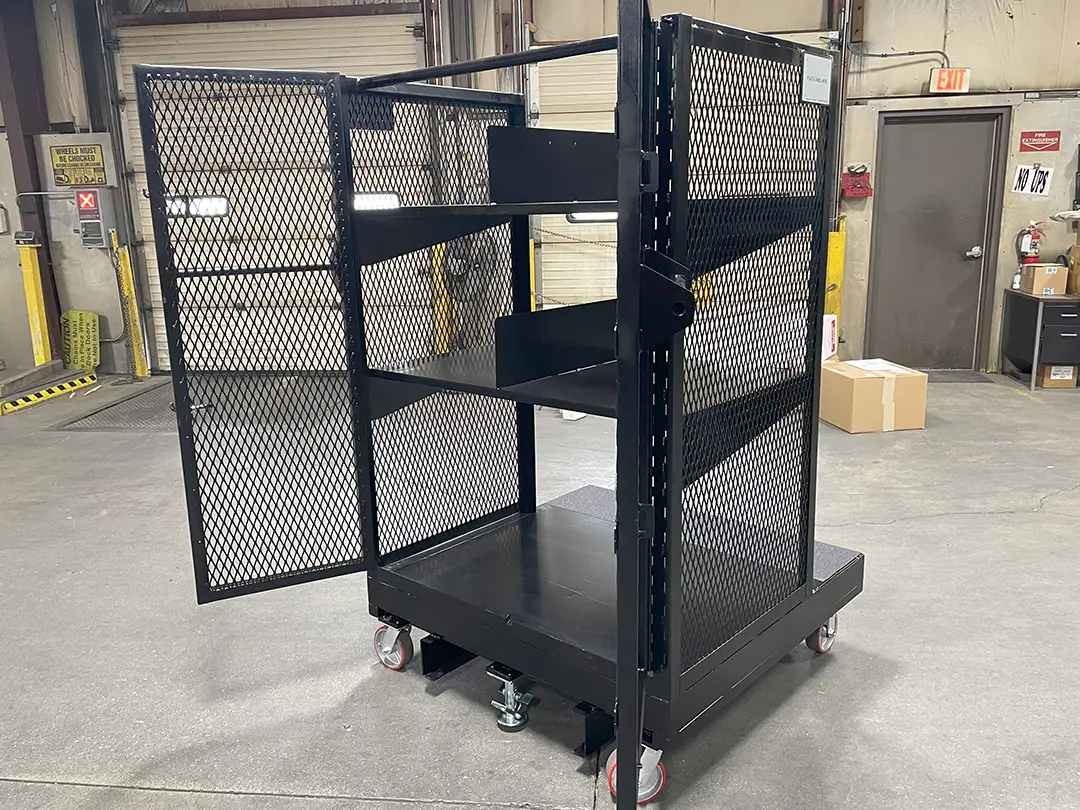
Core Components of Order Picker Cage Systems
Order picker carts are sophisticated material handling solutions designed to optimize the picking process through intelligent design and strategic functionality. At their core, these systems feature multiple shelving levels, secure containment areas, and mobility features that allow workers to complete multiple orders efficiently in a single trip through the warehouse.
The order picker cage component is the foundation of these systems, providing secure storage for picked items while maintaining organization throughout the picking process. These cages are engineered with visibility, allowing workers to identify picked items and maintain accuracy across multiple orders quickly. The cage design prevents items from falling or shifting during transport, reducing damage and improving safety.
Modern order picker cage cart systems incorporate advanced features such as adjustable shelving, integrated labeling systems, and ergonomic handles that reduce worker fatigue. The mobility aspect is carefully engineered to smooth movement across various floor surfaces while maintaining stability during loading and unloading operations.
Types of Order Picking Carts: Finding the Right Solution for Your Warehouse
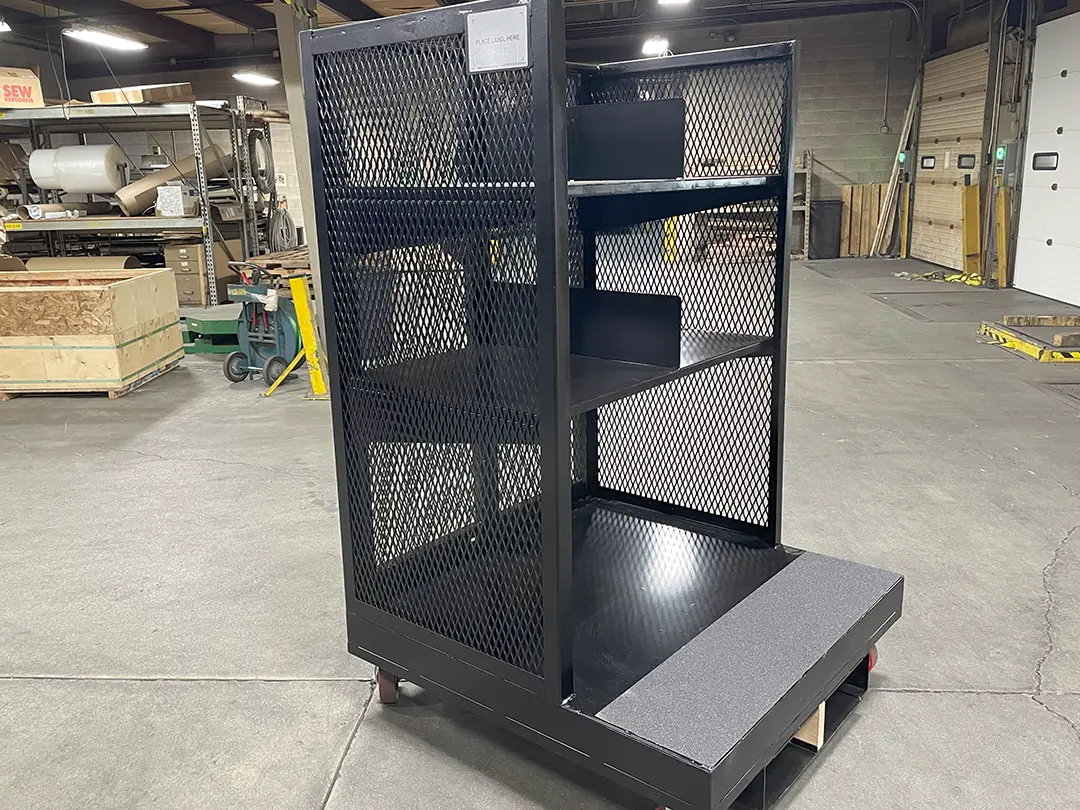
3-Shelf Order Picking Carts: Versatility Meets Efficiency
3-shelf order picking carts represent the sweet spot between functionality and maneuverability for many warehouse operations. These versatile units provide sufficient storage capacity for multiple orders while remaining compact enough for easy navigation through narrow aisles. The three-tier design allows for logical organization of picked items, with many operations dedicating each shelf to different order priorities or product categories.
The design philosophy behind 3-shelf order picking carts focuses on maximizing picking efficiency while maintaining ergonomic accessibility. Workers can easily reach all three levels without excessive bending or stretching, and the distributed weight across multiple shelves prevents the cart from becoming top-heavy or difficult to maneuver.
Industrial Order Picking Carts for Heavy-Duty Applications
For warehouses handling larger, heavier items or operating in demanding environments, industrial order picking carts provide the robust construction and enhanced capacity for challenging applications. These heavy-duty units feature reinforced frames, enhanced wheel systems, and increased load capacities that support high-volume operations without compromising durability.
Industrial order picking carts often incorporate specialized features such as reinforced shelving, protective coatings for harsh environments, and advanced mobility systems designed for continuous use. The investment in industrial-grade equipment pays dividends through reduced maintenance costs, extended service life, and improved operational reliability.
Forklift-Mounted Solutions for High-Volume Operations
Forklift order picking carts represent the next evolution in warehouse efficiency. They combine forklifts’ mobility and lifting capability with the organization and accessibility of traditional picking carts. These systems mount directly to forklift forks, allowing operators to efficiently pick items at various heights while maintaining cage-style containment’s security and organization benefits.
The integration of forklift order picking cart systems enables warehouses to tackle high-level picking without the safety concerns and inefficiencies associated with traditional lift-truck operations. Operators can access multiple shelving levels in one trip while maintaining full visibility and control over picked items.
Key Benefits of Implementing Order Picker Carts in Modern Warehouses
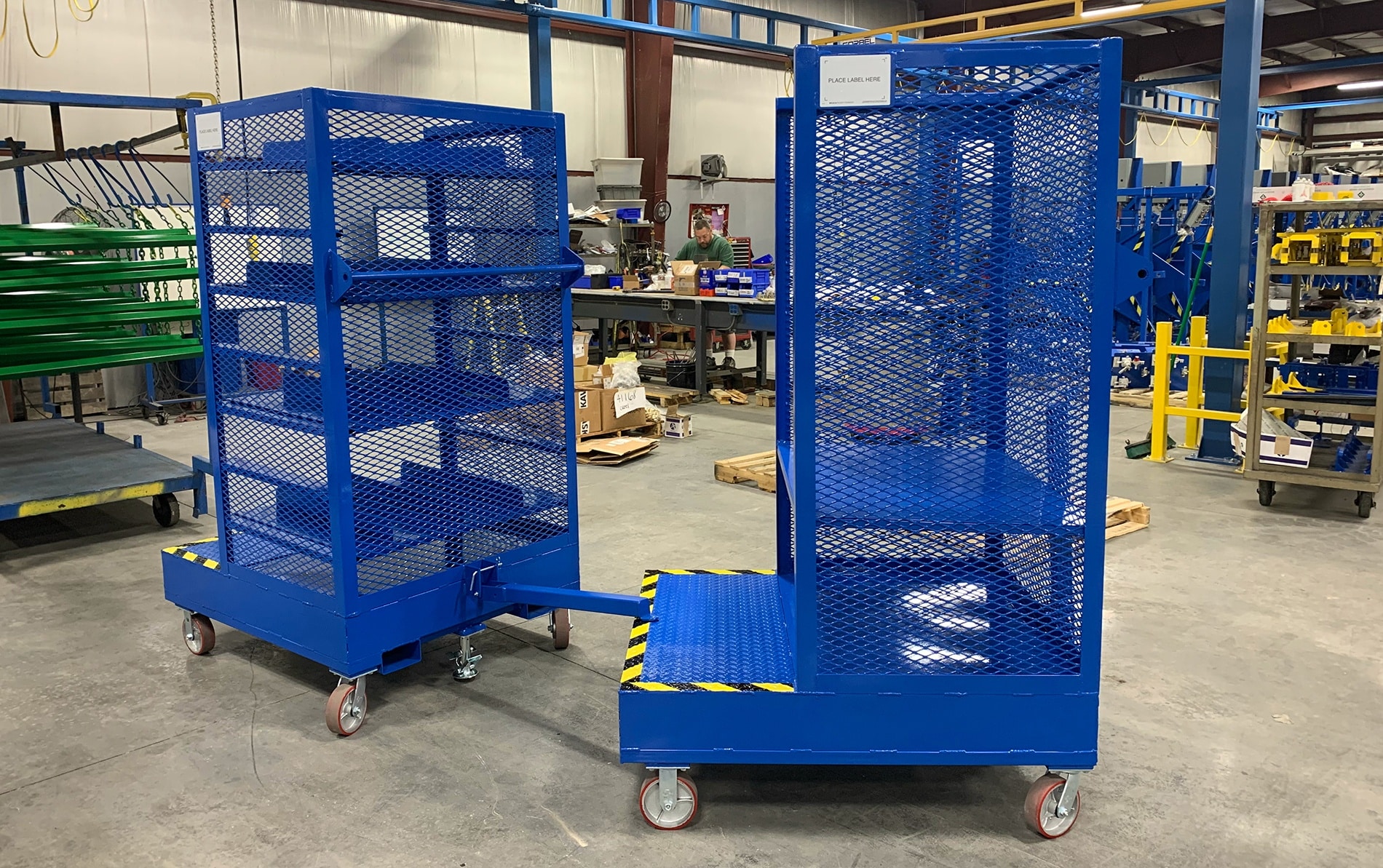
Cost Reduction Through Improved Efficiency
The financial impact of implementing order picking cart systems extends far beyond the initial equipment investment. By reducing the trips required to complete orders, warehouses can dramatically decrease labor costs while improving order turnaround times. Studies consistently show that efficient picking systems can reduce order completion time by 30-50%, translating directly to bottom-line improvements.
The efficiency gains compound throughout the operation, as faster picking allows for more orders processed per shift, reduced overtime requirements, and improved customer satisfaction through faster delivery times. Order picker cart systems also reduce the physical demands on workers, leading to lower turnover rates and reduced recruitment and training costs.
Enhanced Worker Safety and Ergonomics
Worker safety improvements represent one of the most compelling arguments for order picker cage implementation. These systems significantly reduce workplace injuries by providing secure, organized storage for picked items and reducing the physical demands of the picking process. The ergonomic design features built into modern picking carts help maintain proper body mechanics throughout the workday.
The order picker with cage design philosophy prioritizes worker comfort and safety through features such as adjustable handles, smooth-rolling wheels, and intuitive organization systems. These seemingly minor improvements accumulate throughout the workday, resulting in less worker fatigue, improved accuracy, and enhanced job satisfaction.
Scalability and Flexibility Advantages
Modern warehouse order picking carts are designed with scalability, allowing operations to expand their picking capacity without fundamental system changes. The modular nature of many cart designs enables warehouses to add capacity incrementally as business grows, avoiding the large capital expenditures associated with major system overhauls.
The flexibility inherent in cart-based picking systems also allows warehouses to adapt quickly to changing product mixes, seasonal variations, and evolving customer requirements. This adaptability represents a significant competitive advantage.
Integration Strategies: Maximizing Efficiency with Forklift Order Picking Carts
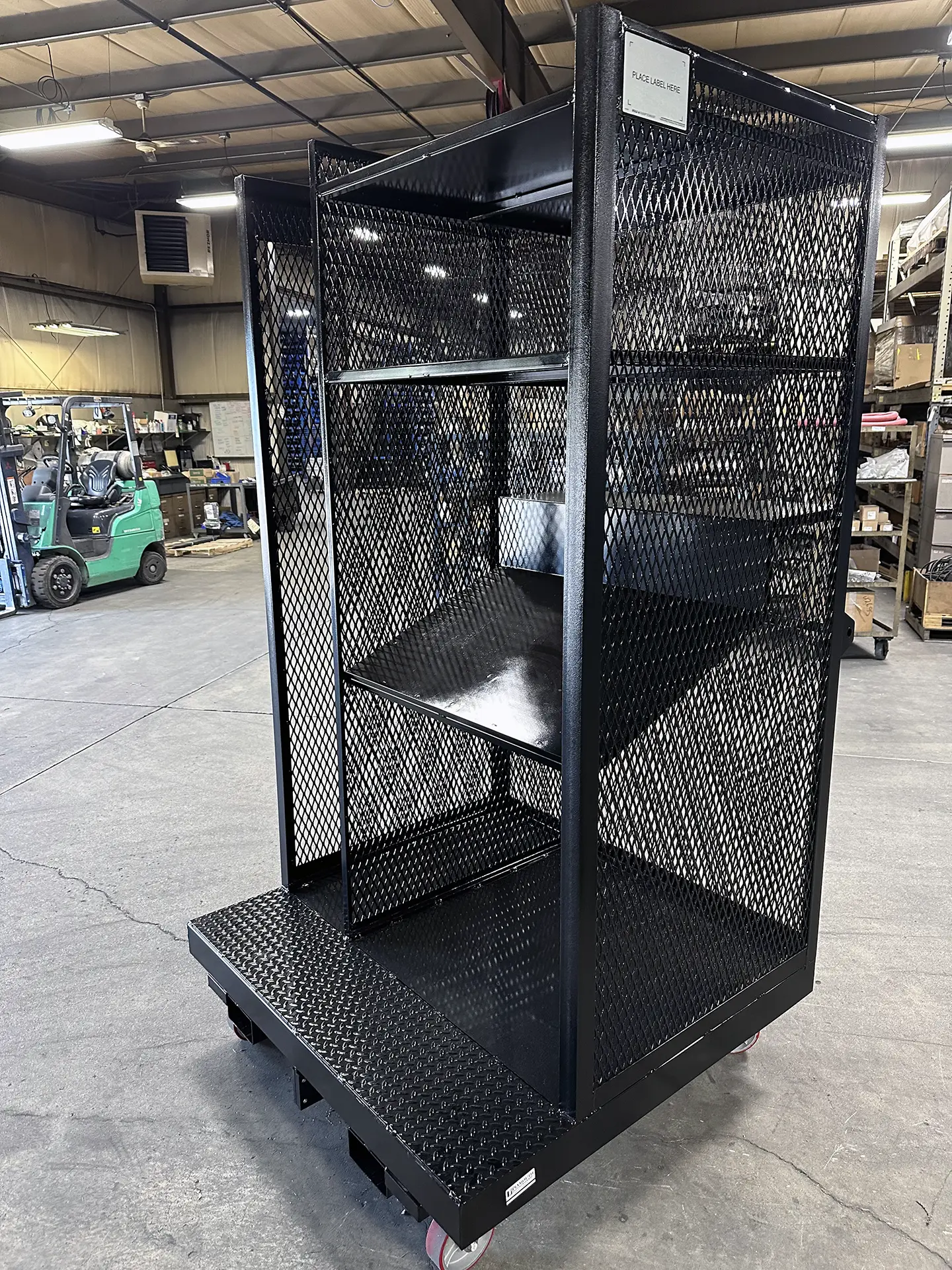
Choosing the Right Order Picker Cage Cart
Selecting the optimal order picker cage cart requires careful consideration of specific operational requirements, including product characteristics, warehouse layout, order profiles, and volume requirements. The decision process should evaluate immediate needs and future growth projections to ensure the chosen solution provides long-term value.
Key factors in the selection process include load capacity requirements, maneuverability needs, integration with existing systems, and specific safety requirements. Forklift order picking carts may be ideal for high-level storage and heavy items operations. In contrast, 3-shelf order picking carts might better serve operations with diverse product mixes and moderate volume requirements.
Implementation Best Practices
Implementing order picking cart systems requires careful planning, comprehensive training, and ongoing optimization. The transition process should include detailed workflow analysis, worker training programs, and performance monitoring systems to ensure maximum benefit realization.
Change management becomes crucial during implementation, as workers must adapt to new processes and equipment. Providing comprehensive training on order picker cart operation, safety protocols, and efficiency techniques ensures smooth adoption and maximizes the return on investment.
Real-World Impact: How Businesses Are Transforming Their Operations
ROI Calculations and Performance Metrics
Companies implementing industrial order picking carts consistently report significant improvements in key performance indicators. Productivity increases of 25-40% are common, while accuracy improvements often exceed 15%. These operational improvements translate directly into financial benefits through reduced labor costs, improved customer satisfaction, and decreased error-related expenses.
The payback period for order picker cage cart investments typically ranges from 6 to 18 months, depending on the operation size and utilization levels. Long-term benefits include reduced worker compensation costs, improved retention rates, and enhanced business growth capacity without proportional labor requirement increases.
Future-Proofing Your Warehouse: Making the Smart Investment
The warehouse industry continues evolving rapidly, with automation, artificial intelligence, and advanced logistics concepts reshaping operational requirements. Order picker carts represent a foundational investment that provides immediate benefits while supporting future technological integration.
As warehouses increasingly adopt hybrid approaches combining human workers with automated systems, order picking cart technology is a crucial bridge. It maintains operational efficiency while preparing for gradual automation integration. The flexibility and scalability of modern cart systems ensure they remain valuable assets throughout the technological transition process.
Investment in quality warehouse order picking carts positions operations for sustained competitive advantage through improved efficiency, enhanced safety, and increased adaptability to changing market demands. Combining immediate operational improvements and long-term strategic value makes order picker cart implementation one of the warehouse managers’ most impactful decisions.
Conclusion
The transformation from traditional manual picking methods to modern order picker cart systems represents more than just equipment upgrades; it’s a fundamental shift toward more efficient, safer, and scalable warehouse operations. As explored throughout this discussion, the benefits extend beyond simple productivity improvements to worker safety, operational flexibility, and long-term competitive positioning.
Whether considering 3-shelf order picking carts for moderate-volume operations or industrial order picking carts for demanding applications, the key lies in selecting solutions that align with your specific operational requirements while providing room for future growth. Investing in quality order picker cage systems pays dividends through reduced costs, improved accuracy, and enhanced worker satisfaction.
The warehouses that thrive in tomorrow’s competitive landscape will embrace innovative solutions today. Order picking carts provide the foundation for operational excellence while supporting technological evolution and reshaping the industry. The question isn’t whether to make this transition, but how quickly you can implement these game-changing solutions to stay ahead of the competition.
Frequently Asked Questions
Q: How do order picker carts improve warehouse safety compared to traditional picking methods?
A: Order picker carts enhance safety by reducing physical strain through ergonomic design, minimizing trips and falls with stable mobility systems, preventing items from falling with secure cage containment, and reducing repetitive motions that lead to workplace injuries. The organized storage reduces reaching and lifting in awkward positions.
Q: What’s the difference between 3-shelf order picking carts and industrial order picking carts?
A: 3-shelf order picking carts are designed for versatility and moderate loads, offering three storage levels for efficient organization in standard warehouse environments. Industrial order picking carts feature heavy-duty construction, higher load capacities, reinforced components, and enhanced durability for demanding applications with heavier items or harsh conditions.
Q: Can forklift order picking carts be used with any type of forklift?
A: Most forklift order picking carts are designed with universal mounting systems compatible with standard forklift forks, but it’s essential to verify weight capacity, mounting specifications, and operational requirements. Some specialized applications may require custom mounting solutions or specific forklift configurations for optimal performance.
Q: How long does it typically take to see ROI from order picker cart implementation?
A: Most warehouses see ROI within 6-18 months, depending on operation size, utilization levels, and current efficiency baseline. Factors affecting ROI include labor cost savings, productivity improvements, reduced error rates, decreased injury-related costs, and improved order accuracy. Larger operations typically see faster payback periods.
Q: What maintenance is required for order picking cart systems?
A: Regular maintenance includes wheel inspection and lubrication, cage integrity checks, handle and moving parts assessment, cleaning to prevent debris buildup, and periodic load testing. Most quality systems require minimal maintenance when used properly, with routine inspections ensuring long service life and optimal performance.

